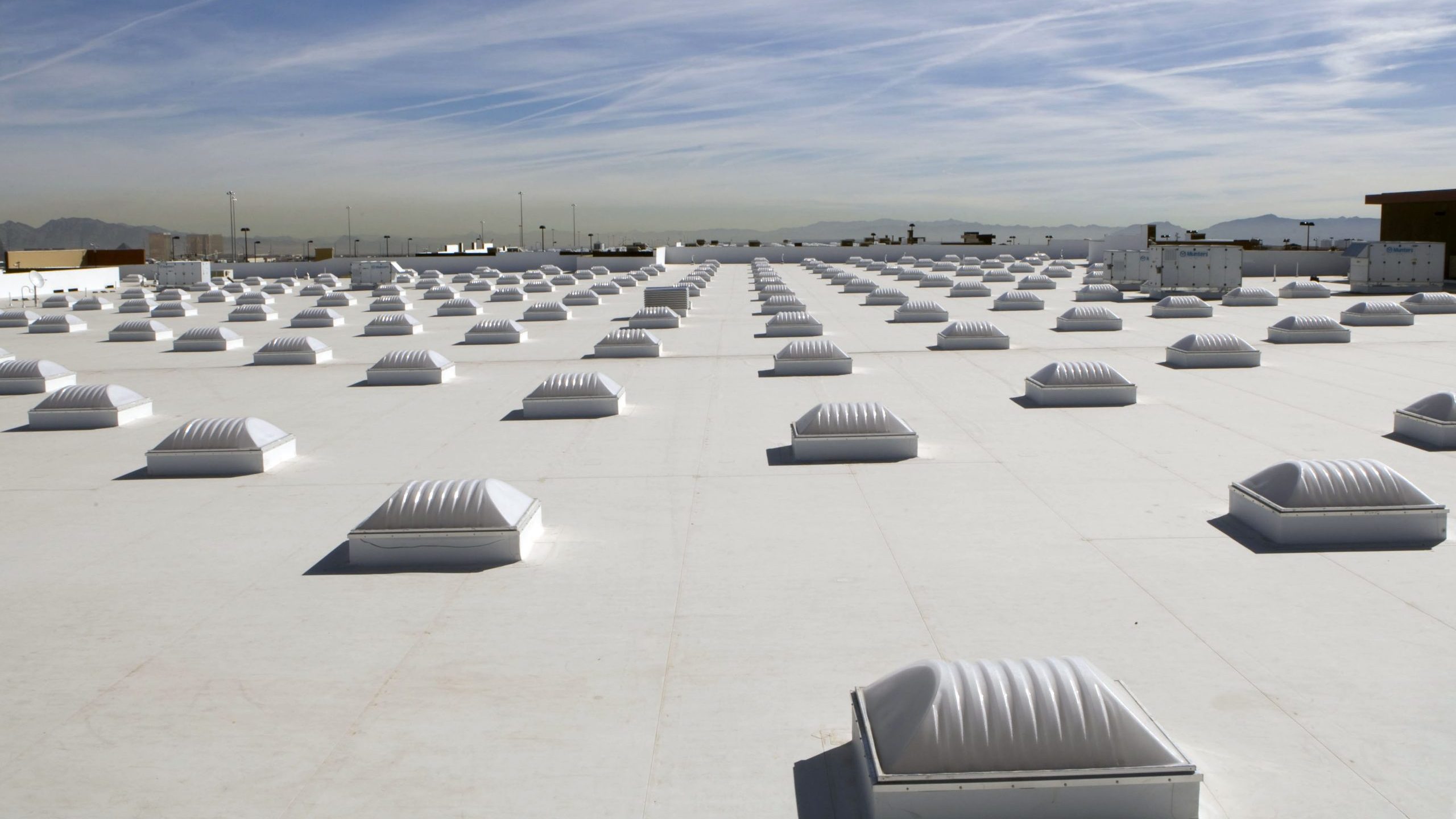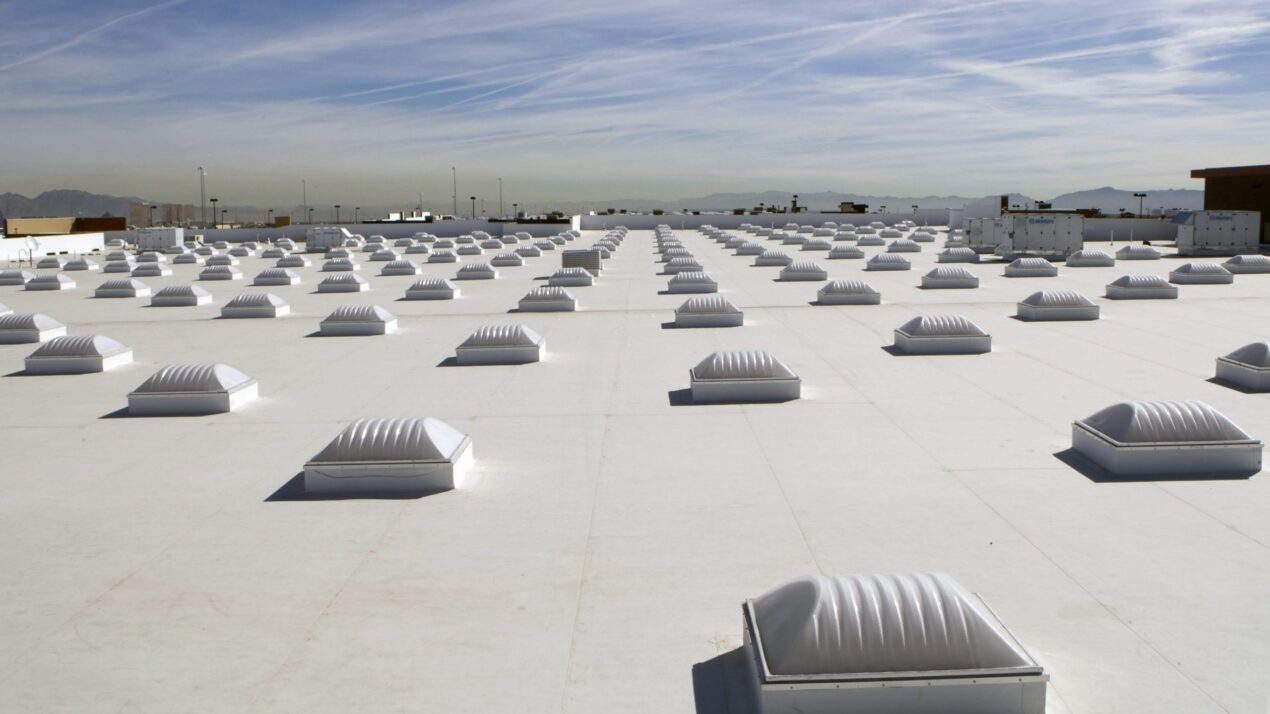
Cool roofs
Workforce Development

Case Studies
Summary
Cool roofs are designed with materials that reflect more sunlight than conventional roofs, reduce building heat retention, and in turn reduce the urban heat island effect. Cool roofs can reduce internal building temperatures by up to 30%.
Implementation
Host trainings to install roofs. Develop volunteer programs to coat roofs and use public education, demonstration project, and media campaigns to raise awareness.
Considerations for Use
Areas with cold winters will trade-off reduced heat retention during warmer months with increased heating needs and moisture buildup during colder months. Cool roofs work best in areas with uniform building heights. Shorter buildings may cause glare on taller buildings. Depending on the treatment applied, cool roofs lose some surface reflectivity over time. The cost of coating materials will vary based on selected coating and local availability. Integrating cool roofs in new construction is more cost effective than a retrofit, but cool roofs are still one of the most affordable and approachable retrofit measures.
Overview
Climate:
Hot/Dry, Hot/Humid, TemperatePolicy Levers:
Workforce DevelopmentPrograms and investments that grow a workforce and support skill growth, training, and education.Trigger Points:
No-regrets actions (low cost/low effort but substantial benefit)Interventions that are relatively low-cost and low effort (in terms of requisite dependencies) but have substantial environmental and/or social benefits.Intervention Types:
Buildings and Built FormSectors:
Buildings, Informal Settlements
Case Studies
Impact
Target Beneficiaries:
Heat-vulnerable communities, ResidentsPhase of Impact:
Risk reduction and mitigationMetrics:
Energy savings by building, Indoor air temperature reductions, Number of buildings compliant with provision, Outdoor ambient air temperature
Implementation
Intervention Scale:
BuildingAuthority and Governance:
City government, State/provincial governmentImplementation Timeline:
Medium-term (3-9 Years)Implementation Stakeholders:
CBOs, City governmentFunding Sources:
Private investment, Public investmentCapacity to Act:
High, MediumBenefits
Cost-Benefit:
LowPublic Good:
HighGHG Reduction:
MediumCo-benefits (Climate/Environmental):
Reduce greenhouse gas emissionsCo-benefits (Social/Economic):
Build social cohesion, Create jobs, Save on utilities